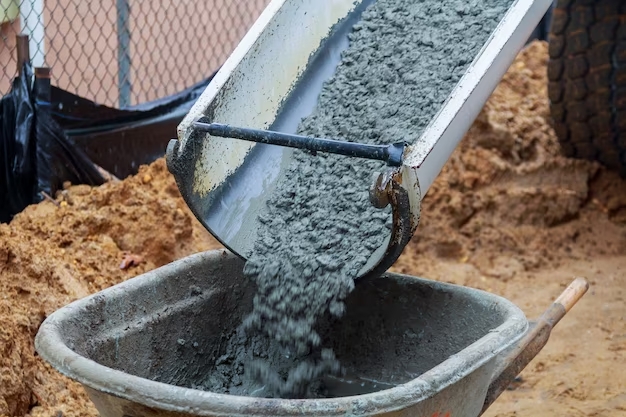If you are planning to build anything with concrete, it’s essential to understand the dry time for concrete. The dry time is the period it takes for the concrete to cure or harden fully. The curing process is critical, and if it’s not done correctly, it could lead to structural issues, cracks, and other problems. In this article, we will discuss everything you need to know about dry time for concrete, including factors affecting it, the importance of proper dry time, methods to speed up the drying process, and proper maintenance during the curing period.
Factors Affecting Dry Time for Concrete
Several factors can affect the drying time of concrete, and these include:
Humidity
The level of humidity in the air can significantly affect the drying time of concrete. If the air is dry, the concrete will dry faster, but if the air is humid, it will slow down the process.
Temperature
Temperature is another crucial factor that affects the drying time of concrete. If the temperature is high, the concrete will dry faster, but if it’s cold, it will slow down the process.
Type of Concrete
Different types of concrete have different drying times. The higher the cement content in the mixture, the faster it will dry.
Surface Area
The surface area of the concrete also affects the drying time. Larger surface areas will take longer to dry than smaller areas.
Thickness
The thickness of the concrete also affects the drying time. Thicker sections take longer to dry than thinner sections.
Dry Time for Concrete: Factors, Importance, and FAQs
- Factors affecting dry time for concrete include humidity, temperature, type of concrete, surface area, and thickness.
- Proper dry time is important for strength, durability, and avoiding structural issues and adhesive failures.
- Methods to speed up dry time for concrete include increasing air circulation, using dehumidifiers, applying a surface drying agent, adding accelerators, and using high-early-strength concrete.
Importance of Proper Dry Time for Concrete
| Factor | Description |
| Water-Cement Ratio | The water-cement ratio is the ratio of the weight of water to the weight of cement used in a concrete mix. A lower water-cement ratio results in stronger concrete. |
| Curing | Proper curing is essential for concrete strength development. Curing ensures that the concrete remains moist and at a favorable temperature for a sufficient period, allowing it to gain strength and durability. |
| Aggregate | The size, shape, and texture of the aggregate used in concrete can affect its strength. Larger aggregates tend to result in stronger concrete, while rough and angular aggregates provide better bonding with the cement paste. |
| Admixtures | Admixtures are chemicals added to concrete to modify its properties. Some admixtures can improve the strength and durability of concrete. |
| Age | The strength of concrete increases as it ages. Concrete gains most of its strength within the first 28 days, but it can continue to gain strength for several years. |
Proper dry time for concrete is crucial to ensure that the concrete reaches its full strength and durability potential. If the concrete doesn’t dry properly, it can lead to weak spots, cracks, and other structural problems. In addition, the concrete must dry completely before any coatings or finishes are applied. Failure to let the concrete dry completely can result in adhesive failures and other issues.
Methods to Speed Up Dry Time for Concrete
Several methods can be used to speed up the drying time of concrete, including:
Increasing Air Circulation
Increasing air circulation around the concrete can help to speed up the drying process. You can use fans or other ventilation equipment to circulate the air around the concrete.
Using Dehumidifiers
Using dehumidifiers can also help to remove moisture from the air and speed up the drying process. Dehumidifiers are particularly useful in areas with high humidity.
Applying a Surface Drying Agent
Applying a surface drying agent can help to draw moisture out of the concrete and speed up the drying process. There are several types of surface drying agents available, including calcium chloride and silica gel.
Adding Accelerators
Adding accelerators to the concrete mixture can speed up the drying process by increasing the rate of chemical reactions that occur during the setting and hardening process.
Using High-Early-Strength Concrete
High-early-strength concrete is designed to reach its full strength potential in a shorter amount of time than traditional concrete. This type of concrete can be useful when time is of the essence.
Proper Maintenance during Dry Time
Proper maintenance during the drying process is crucial to ensure that the concrete dries evenly and reaches its full strength potential. During this time, you should:
Personal Experience: Importance of Proper Dry Time for Concrete
I recently had a personal experience with the importance of proper dry time for concrete. I was working on a home renovation project with a friend, and we decided to pour a new concrete patio in the backyard. We were eager to move forward with the project and didn’t take the time to properly research the dry time for concrete.
We poured the concrete on a hot and humid day, and didn’t take into account the thickness of the concrete slab. We assumed that it would dry within a few days, but didn’t realize that it would take much longer for the concrete to fully cure.
After just a few days, we began to notice cracks forming in the concrete. We didn’t understand what was happening at first, but after some research, we realized that we had rushed the drying process. The concrete wasn’t given enough time to properly cure, which resulted in these cracks.
We ended up having to remove the concrete and start over, which was a costly and time-consuming mistake. This experience taught me the importance of taking the time to properly dry concrete, and following best practices to ensure that it is fully cured before proceeding with any construction projects.
Protect from Moisture, Rain, and Extreme Temperature Changes
During the drying process, it’s crucial to protect the concrete from moisture, rain, and extreme temperature changes. Moisture and rain can slow down the drying process, while extreme temperature changes can cause the concrete to crack.
Cover the Concrete
Covering the concrete with a tarp or plastic sheet can help to protect it from moisture, rain, and extreme temperature changes. It can also help to maintain a consistent temperature during the drying process.
Avoid Heavy Foot Traffic or Placing Heavy Objects on the Concrete
During the drying process, it’s essential to avoid heavy foot traffic or placing heavy objects on the concrete. Doing so can cause the concrete to crack or become damaged, compromising its strength and durability.
FAQs about Dry Time for Concrete
How Long Does It Take for Concrete to Dry?
Typically, concrete takes between 24 and 48 hours to dry, but the drying time can vary depending on several factors, including humidity, temperature, type of concrete, surface area, and thickness.
Can You Pour Concrete in the Rain?
It’s not recommended to pour concrete in the rain. Rain can significantly slow down the drying process and compromise the strength and durability of the finished product.
How Do You Know When Concrete Is Dry Enough to Walk On?
Concrete is typically dry enough to walk on after 24 hours, but it’s essential to wait at least 48 hours before applying any coatings or finishes.
Is It Safe to Build on Concrete That Is Not Completely Dry?
No, it’s not safe to build on concrete that is not completely dry. Doing so can compromise the strength and durability of the finished product and result in cracks, weak spots, and other structural issues.
Conclusion
Proper dry time for concrete is essential to ensure the strength and durability of the finished product. The drying time can vary depending on several factors, including humidity, temperature, type of concrete (e.g. C35 concrete, C20 concrete, C10 concrete, etc.) surface area, and thickness. To speed up the drying process, you can use methods such as increasing air circulation, using dehumidifiers, applying a surface drying agent, adding accelerators, and using high-early-strength concrete. Proper maintenance during the drying process is also crucial to ensure that the concrete dries evenly and reaches its full strength potential. By following the best practices, your concrete project will be durable, strong, and long-lasting.
Visit our website to read about amazing things ilogi





